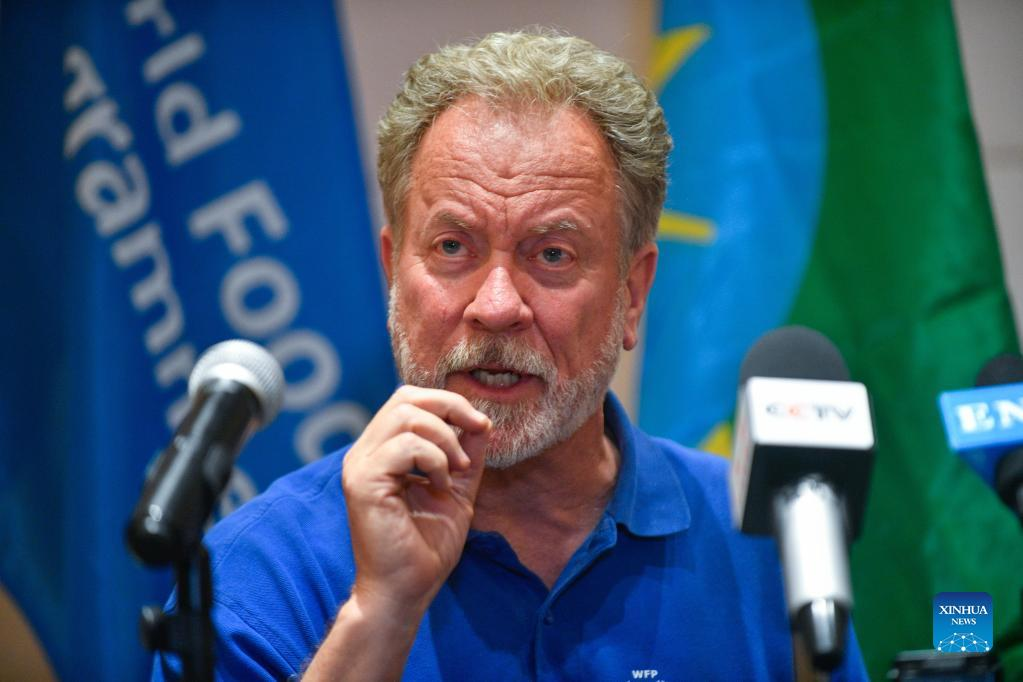
Horn of Africa could face “unprecedented” food insecurity in 2023, WFP warns
The Horn of Africa could face “unprecedented food unavailability problems” in 2023 due to ongoing drought and food supply shortages caused by the Russia-Ukraine conflict, David Beasley Executive Director of the UN World Food Program (WFP) has warned.
“The drought situation in the Somali region of Ethiopia is desperate and extraordinary,” Beasley said during a briefing on Thursday after his visit to drought stricken Gode district in Ethiopia’s Somali region.

The region has been hit by several years of conflict, climate change and recently affected by the impacts of COVID-19 and Russia-Ukraine conflict which cut food supply to Africa and the entire world, the WFP chief said.
Highlighting that Russia and Ukraine supply about 13 percent of wheat, 20 percent of maize, 76 percent of sunflower oil to the world, Beasley said the conflict has pushed the number of African people suffering from food shortages to 325 million from 276 million before the conflict began some months ago.
“WFP’s operational cost has increased by additional 70 million U.S. dollars every month after the Russia-Ukraine (conflict) broke out, which resulted in increase in fuel, fertilizer and shipping prices,” he said, noting that the situation forced WFP to cut food ration to four million people.
ALSO READ: South African minister welcomes Covid vax patent waiver
“Whenever a sanction is put in place, the international community should make certain that it does not hurt the rest of the world,” Beasley said, as he called for the opening up of ports for the sake of food and fertilizer supply to the needy.
In a statement it released during the briefing, WFP said an estimated 7.4 million people wake up hungry every day in southern and south eastern Ethiopia as the country grapples with the most severe drought since 1981.
More seek support
The Horn of Africa drought has thrust at least 18.4 million people, including more than 7.1 million acutely malnourished children, into severe food insecurity, UN humanitarians said on Monday.
“From northern Ethiopia, we and our partners are continuing to provide humanitarian aid across Tigray, Afar, and Amhara,” the UN Office for the Coordination of Humanitarian Affairs (OCHA) said, referring to the trio of northern regions. Most drought victims are in Ethiopia, Kenya and Somalia.
Looking to the future, humanitarians said the latest forecasts point to a concrete risk of a fifth failed rainy season later this year.
Relief reached more than 900,000 people since June 1, the office said. Between April, when aid delivery by road convoys resumed, and last week, humanitarians delivered more than 65,000 tons of food aid in Tigray. Hostilities in the northernmost Tigray region extended into its neighbors of Afar and Amhara at times, severely interrupting deliveries.
One-third of people targeted for aid received food aid in the current round of distributions which began in October, OCHA said. Fuel supplies also continue to be limited, significantly impacting getting food to people who need it.
Humanitarians deliver Tigray aid, including water and sanitation, shelter and nutrition, by convoys and air, the office said. In Amhara, food relief reached more than 10 million people since late December and in Afar more than 992,000 people since late February.
“Some areas near the border between Amhara and Tigray remain hard to reach,” OCHA said. “We continue to call for unfettered access for aid workers to reach all men, women and children in need across northern Ethiopia.”
The office said that the devastating drought affecting the Horn of Africa has caused severe food insecurity and malnutrition to rise precipitously in many parts of Kenya.
There are now 4.1 million people in Kenya facing crisis – or emergency – level food insecurity, up from 3.5 million just a few months ago, OCHA said. There are more severely food insecure people in Kenya than during both the droughts of 2010-2011 and 2016-2017.
Malnutrition increases at an alarming rate, the office said. At least 942,000 children under the age of five and some 134,000 pregnant or lactating women urgently need treatment.
ALSO READ:South African minister welcomes Covid vax patent waiver
“Our humanitarian colleagues continue to call for an urgent and immediate increase in funding,” OCHA said. “Without additional resources we and our partners will be forced to make impossible choices.”
“We face a real and imminent threat of large-scale loss of life,” the humanitarian coordinator for Somalia, Adam Abdelmoula, said last week.
Humanitarians are calling for 180.7 million U.S. dollars to respond to the highest priority needs in Kenya.


